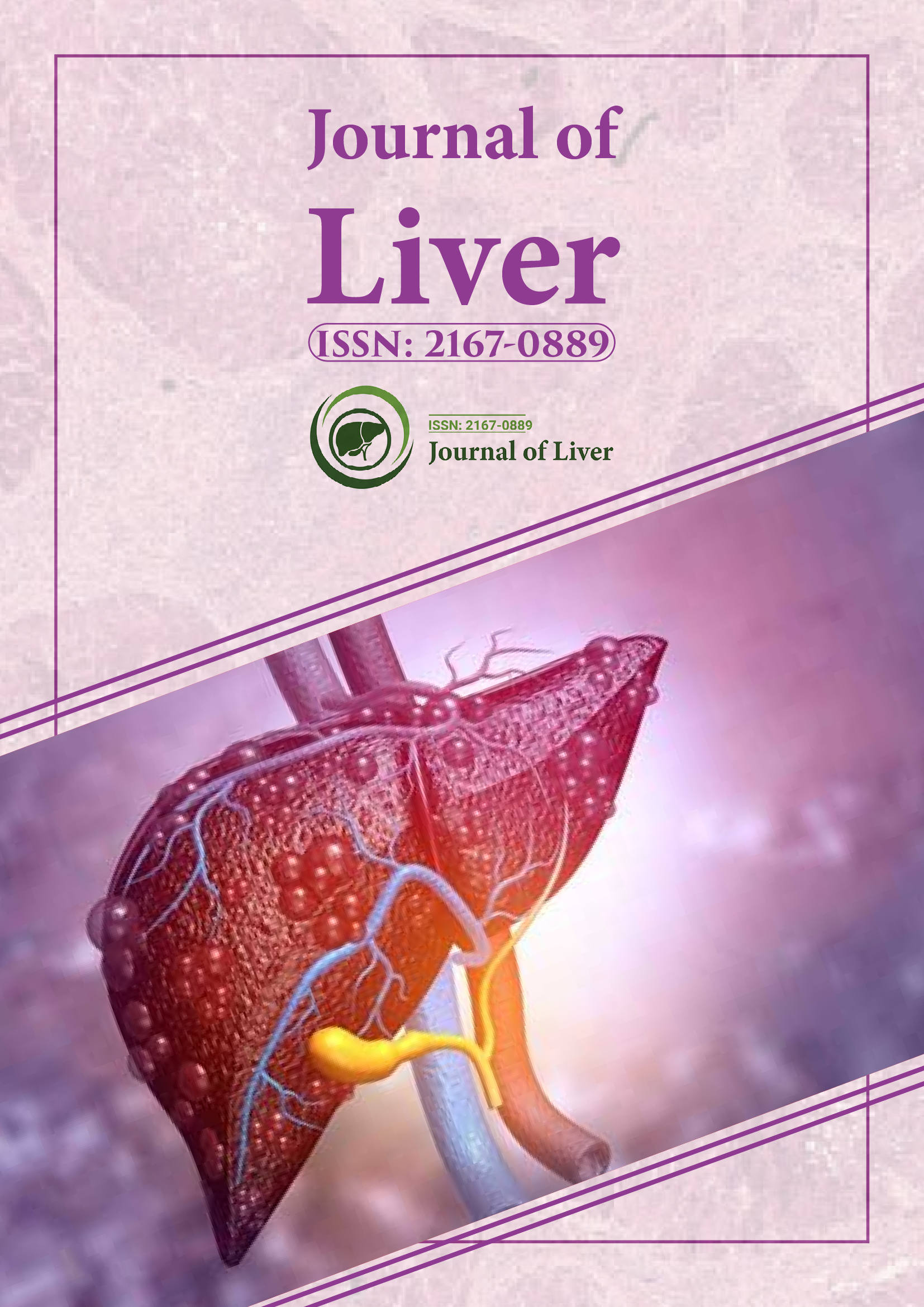Indexed In
- Open J Gate
- Genamics JournalSeek
- Academic Keys
- RefSeek
- Hamdard University
- EBSCO A-Z
- OCLC- WorldCat
- Publons
- Geneva Foundation for Medical Education and Research
- Google Scholar
Useful Links
Share This Page
Journal Flyer

Open Access Journals
- Agri and Aquaculture
- Biochemistry
- Bioinformatics & Systems Biology
- Business & Management
- Chemistry
- Clinical Sciences
- Engineering
- Food & Nutrition
- General Science
- Genetics & Molecular Biology
- Immunology & Microbiology
- Medical Sciences
- Neuroscience & Psychology
- Nursing & Health Care
- Pharmaceutical Sciences
Abstract
Refractory Ascites in Cirrhosis: Prevalence and Predictive Factors
Rym Ennaifer, Nour Elleuch, Hayfa Romdhane, Rania Hefaiedh, Myriam Cheikh, Sonda Chaabouni, Houda Ben Nejma and Najet Bel Hadj
Introduction: Ascitic decompensation is a common major complication of cirrhosis and is associated with a poor outcome. In 5-10% of patients, ascites become resistant to treatment (either do not respond to a high dose of diuretics or because these drugs induce complications), which is called Refractory Ascites (RA). RA is associated with poor survival: 20-50% at 1 year. Different treatments have been proposed, however, only liver transplantation can improve survival.
The aims of this study were to determine prevalence and predictors of RA development in patients with cirrhosis.
Methods: Retrospective study including consecutive cirrhotic patients admitted for controlling ascites between January 2010 and April 2013. Patients and cirrhosis characteristics were studied. Development of RA during followup was investigated. Predictive factors for RA development were evaluated.
Results: We included 124 cirrhotic patients: 59 females (47.6%) and 65 males (52.4%) with a mean age of 58 years. Ascites was grade 3 in 38.5% and was the first episode in 45.1% of patients. Etiology of cirrhosis was mainly viral (57.3%). Child-Pugh score was B in 39.5% and C in 28.2%. Mean MELD score was 16 (6-40). During follow-up, 27 patients developed RA, meaning a prevalence of 21.8%. RA type was diuretic intractable in all cases. Predictive factors of RA development in univariate analysis were: ascites grade 3 (OR=4.17; p=0.004), Child-Pugh score C (OR=3.9; p=0.02), MELD score ≥ 15 (OR=4.99; p=<0.001), MELD/Na score>16 (OR=4.13; p=0.005), spontaneous bacterial peritonitis at the first admission (OR= 8,14; p=0.002), prothrombin time ≤ 64.5% (OR=3.36; p=0.013) and sodium urinary output ≤ 42 mmol/24 h (OR=5.13; p=0.03). In multivariate analysis, only urine sodium output was an independent predictive factor of RA development (OR= 4.74; p=0.015).
Conclusion: In this present study, prevalence of RA was 21.8%. Urinary sodium output at the first admission for controlling ascite could allow early identification of patients who will develop RA.
